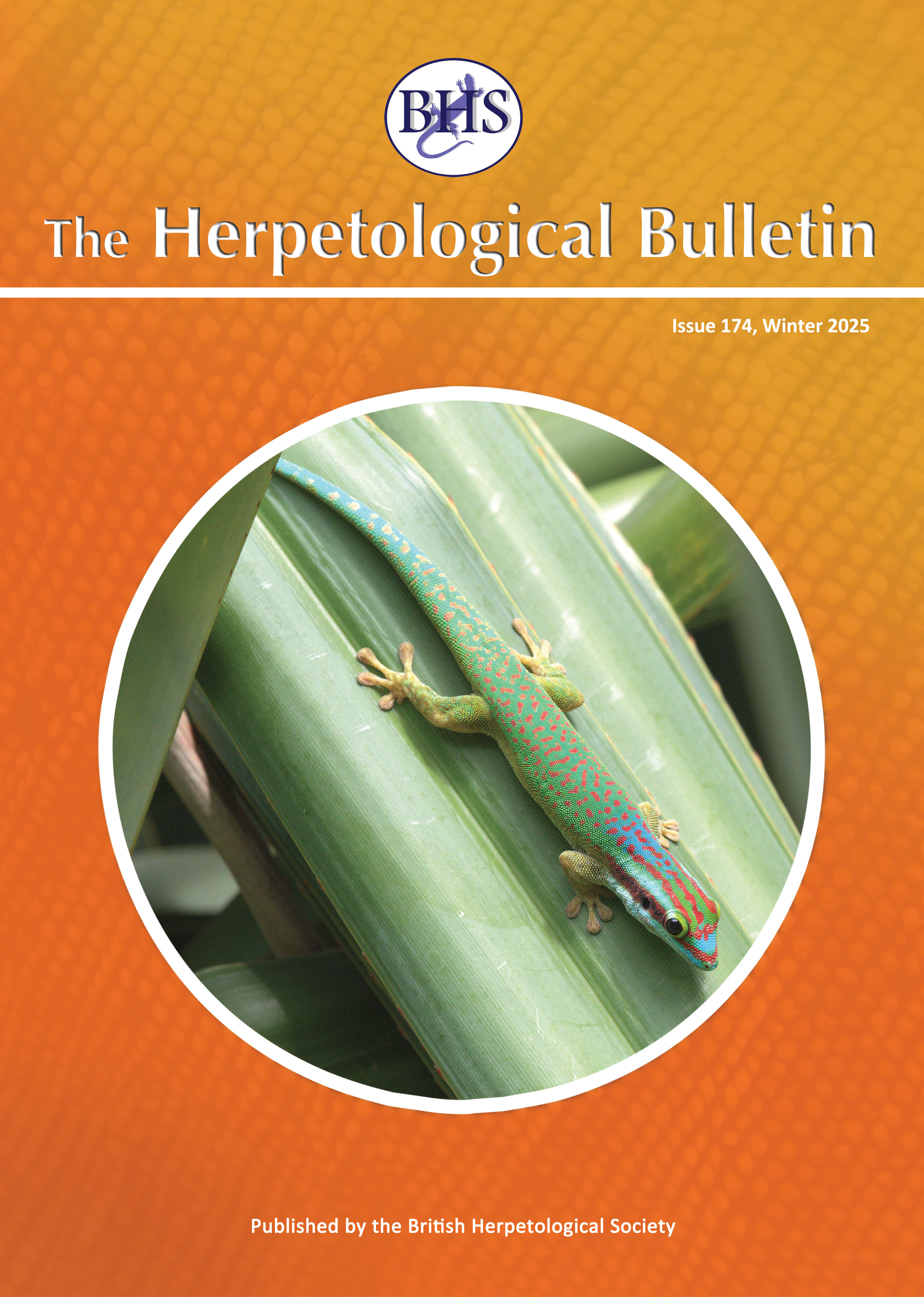
The Herpetological Bulletin
The Herpetological Bulletin is a quarterly publication in English. It includes full-length papers, natural history notes, book reviews, and other items of general herpetological interest. Emphasis is placed on natural history and conservation as well as captive care that includes breeding, husbandry, veterinary, and behavioural aspects.
pdf 03. Evidence that agri-environmental measures in arable fields could be a conservation benefit to northern vipers Vipera berus and other reptiles
1038 downloads
Open Access
AUTHORS: RICK HODGES, CLIFFORD SEABROOK, VANESSA WELSH & WILLIAM ALEXANDER
Abstract – In Britain, some reptiles species have been formally recorded inhabiting arable field margins but previous reports on the incidence of northern vipers or adders Vipera berus in this situation have been anecdotal. In 2017, reptile monitoring was initiated in a field margin that had been created ten years earlier and was located near two chalk grassland nature reserves with established viper populations. In the first three years of recording, numbers of vipers in the field margin were low and limited to a few juveniles and adults. In the fourth year, there was a noticeable increase in number, which were now represented by all life stages. In the fifth year the population doubled again and then remained stable in the sixth year. A similar encounter trajectory was observed for grass snakes, while slow worms and common lizard encounters had different trajectories. There was some evidence of vipers moving between the nature reserves and field margin, even crossing a road to do so, but at least 75 % of vipers in the field margin were only ever detected there. The arable field was mostly used for cropping cereals and oilseeds but, exceptionally, in the three years from 2016 to 2018 it was put down to herbal leys of red clover and grass. In the USA and continental Europe, red clover is known to be a preferred dietary item of voles Microtus spp and has been associated with vole population increase. It is suggested that the increase in the viper population in the field margin may relate to a rise in the number of voles, which are an important component of the viper diet. Likewise, for grass snakes, small mammals may contribute 25 % or more of their diet. The use of herbal leys may present an important opportunity for the conservation of northern vipers in field margins and other adjacent habitats.

